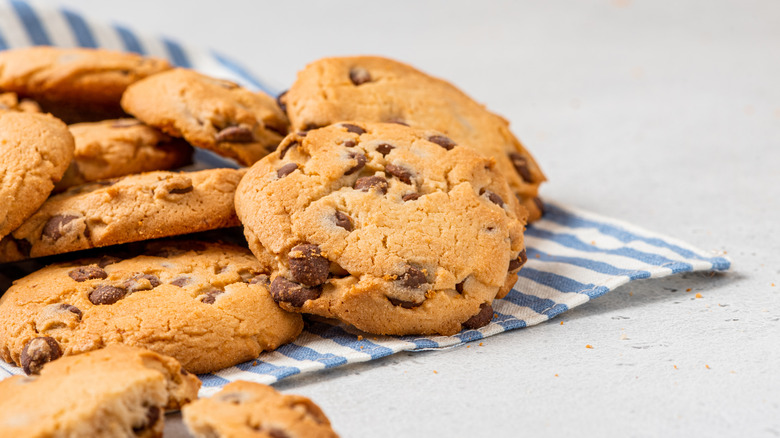Why You May Want To Consider Baking Cookies With Shortening
There is nothing better than the smell of a fresh batch of cookies baking in the oven. While there is something to be said for crispy, crunchy cookies — we must say chewy, gooey cookies warm the soul. Whether you're a fan of beautifully iced sugar cookies, holiday-inspired gingerbread cookies, the classic chocolate chip, or even the widely debated oatmeal raisin, that bit of slight chew takes cookies to another level.
While there are only a few main ingredients needed to make most cookies — fat, eggs, sugar, and flour — slight variations can go a long way (via The Cookie Elf). Fat is essential for cookies as it adds flavor, texture, and moisture, according to Beat Bake Eat. What becomes confusing is how many types of fat can be used and how they differentiate from each other. From cow's butter to vegan butter or coconut oil to olive oil, the list becomes endless. What we're focusing on today though is shortening – what is it and why should you consider it when making cookies?
If you like chewy cookies, try shortening
Let's start with the basics: what is shortening? According to Bob's Red Mill, shortening is "any fat that is solid at room temperature and used in baking." This is a bit broad as that definition encompasses a ton of the fats listed above. For the purposes of this article, however, we are going to dive into vegetable shortening — such as Crisco — which is made from a mix of vegetable oils. In this type of shortening, the oils are hydrogenated so that they remain solid at room temperature. Due to this, the moisture has been removed and, therefore, no steam is released during the baking process (via Buzzfeed).
According to The Kitchn, shortening has a higher melting point than butter. This helps to produce cookies that stand taller and do not flatten as much. While shortening doesn't add as much flavor as butter or some other alternatives, they do make cookies that are more tender. If you're looking for chewy, moist cookies, shortening could be the fat to use — just keep in mind that you may want to add some additional flavors to give the cookies some more taste! Alternatively, use a mix of butter and shortening to get the best of both worlds.

